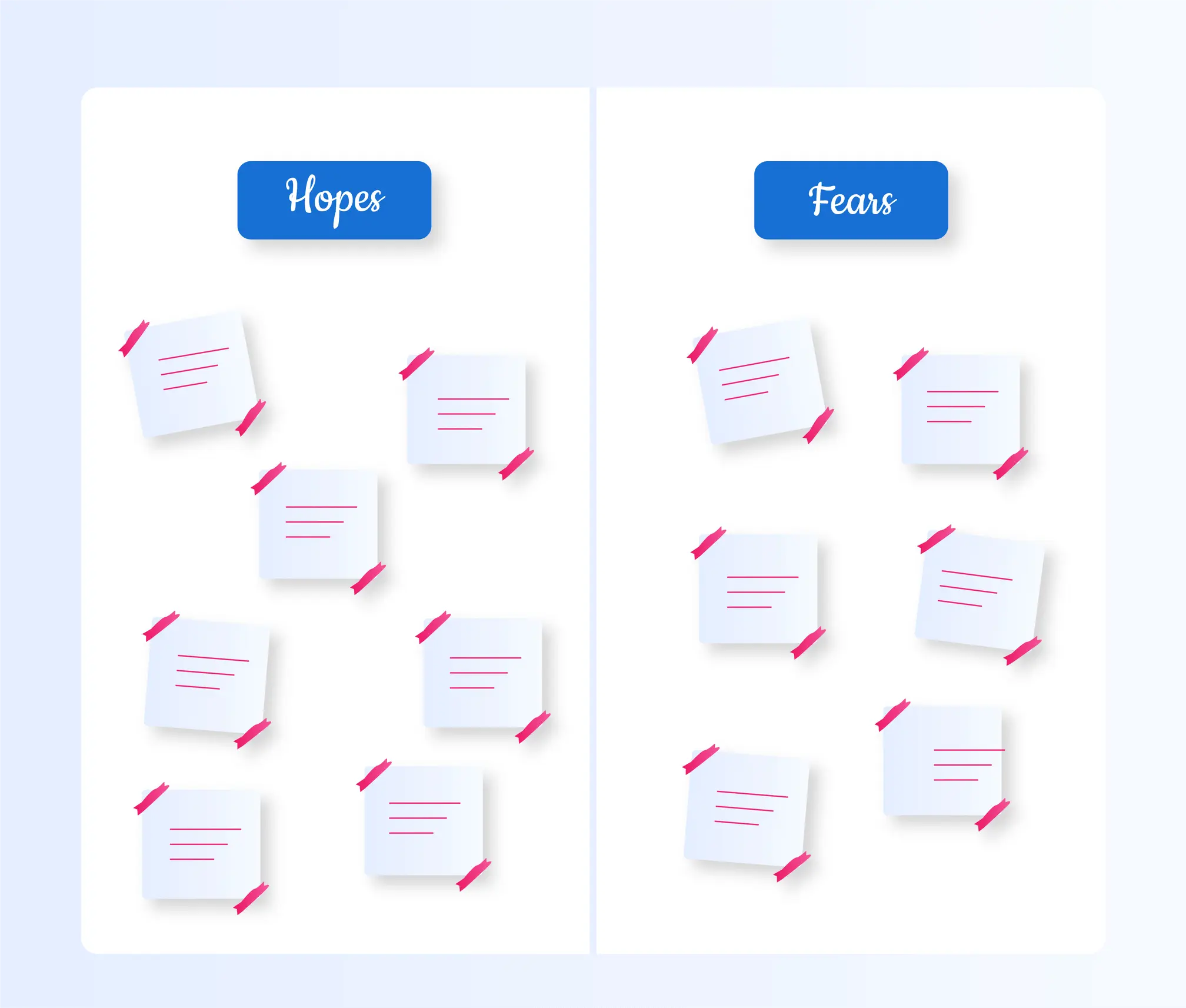The hopes and fears activity effectively gauges participants’ attitudes about a project, workshop, or other collaborative engagement. “Hopes” reveal your teams’ expectations about what can be accomplished, while “Fears” reveal their doubts about investing in working together.
During this phase, the design team typically engages in group discussions and brainstorming sessions to identify their hopes and fears for the project. The team can then categorize these hopes and fears into themes or areas of focus, such as user needs, technical constraints, or project timelines.

Once the hopes and fears have been identified and categorized, the team can develop strategies to address them. For example, if the team is concerned about meeting project deadlines, they may create a plan to streamline the design process or prioritize certain features over others.
One key benefit of this design thinking framework is that it helps align the team’s expectations and identify potential challenges before beginning execution. This can lead to a more effective and efficient design process, as the team is better equipped to handle any possible obstacles.
Key takeaways
- Encouraging open and honest communication among team members
- Identifying potential risks and opportunities early in the design process
- Categorizing hopes and fears into themes or areas of focus
- Developing strategies to address identified risks and opportunities
- Aligning team expectations to avoid potential challenges down the line.

